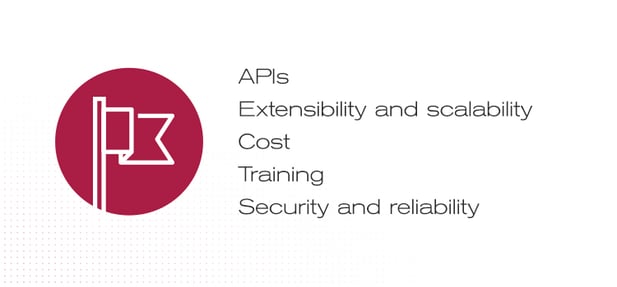Choosing a nonprofit CRM is a lot like shopping for a new vehicle. Like cars, the CRM marketplace has dozens of options out there, all boasting the latest and greatest technology. And, at the end of the day, they all do essentially the same thing, making it difficult to distinguish which option will work best for you.
However, if you’re a soccer mom who opts for a sports car, chances are you’re going to run into some trouble when it’s time to take the team to practice.
CRMs are no different. If you don’t take the time to do your research and pick the best platform for your nonprofit organization – now and in the future – you could end up with something that will cause issues in the long run.
Why it’s important to choose the right CRM
Making the right choice is important because switching is so expensive, both in time and money. We’ll get into the money side in a little bit, but for now let’s talk about the labor it takes to properly launch a new CRM.
Between the moving, configuration and integration of data and the training of new users, we’re talking about a large time investment from your nonprofit organization.
Now, don’t let that scare you off. Having the right CRM will only enable your fundraising success, but it’s important that you get it right so you can focus on raising money for your mission.
Lucky for you, we’ve compiled a list of five red flags that you should keep an eye out for when vetting CRM platforms for your organizations. Here’s a summary:

Red Flag #1: APIs
APIs are web-based programs that allow apps to communicate with other systems. They are the connective tissue that support data integration.
Unfortunately, not all APIs are created equal. While most CRMs tout APIs to an extent, not all will truly be able to integrate with additional solutions as you grow.
A good rule of thumb is to check and see if the CRM you are looking at is listed on Zapier – the most popular middleman between systems. If it’s not listed, then you’ll want to have an experienced developer take a look under the hood to identify any limitations in the CRM’s APIs.
Red Flag #2: Extensibility and scalability
Let’s go back to the car analogy for a second. If you’re a young couple looking to grow your family in the next few years, a car’s ability to serve your growing family now and in the future will be a big selling point when making this investment.
CRMs are an investment for your organization. When vetting platforms, make sure that it’s not only extensive enough to meet all your potential data needs now, but is also scalable to grow with you for the future.
Red Flag #3: Cost
Remember the time commitment we discussed earlier? That’s just half of the equation when evaluating potential CRMs for cost. The more obvious one is money.
While most pricing models will have different accommodations for organizations of various sizes, it’s important to look out for a small monthly or annual price tag that is hiding a much larger implementation fee. If you’re a larger nonprofit, this may be worth the investment, but if you’re a smaller organization, this could put more stress on your finances than it’s worth.
Red Flag #4: Training
Are you given an owner’s manual and left to fend for yourself? While that may work for a car, it won’t work for a CRM.
When looking at your options, make sure that there is an extensive training system in place. Not only should you have initial user training, there should also be guardrails to make sure you continue to use the CRM correctly and don’t end up with data errors that lead to unusable insights.
Red Flag #5: Security and reliability
We saved the most important for last. Does the platform have a contingency plan for things like security breaches or downtime? From something as minor as technical issues to something as major as a data breach, platforms should have clear plans and processes in place to make sure you can always stay up and running and have access to your data.
The CRM market is crowded with options, but by having a pulse on where your organization is now and plans to be in the future, and keeping a look out for any red flags, you’ll be able to narrow down your pool to the options that will unlock breakthroughs for your organization.
 Trent Johnson on February 12, 2021
Trent Johnson on February 12, 2021